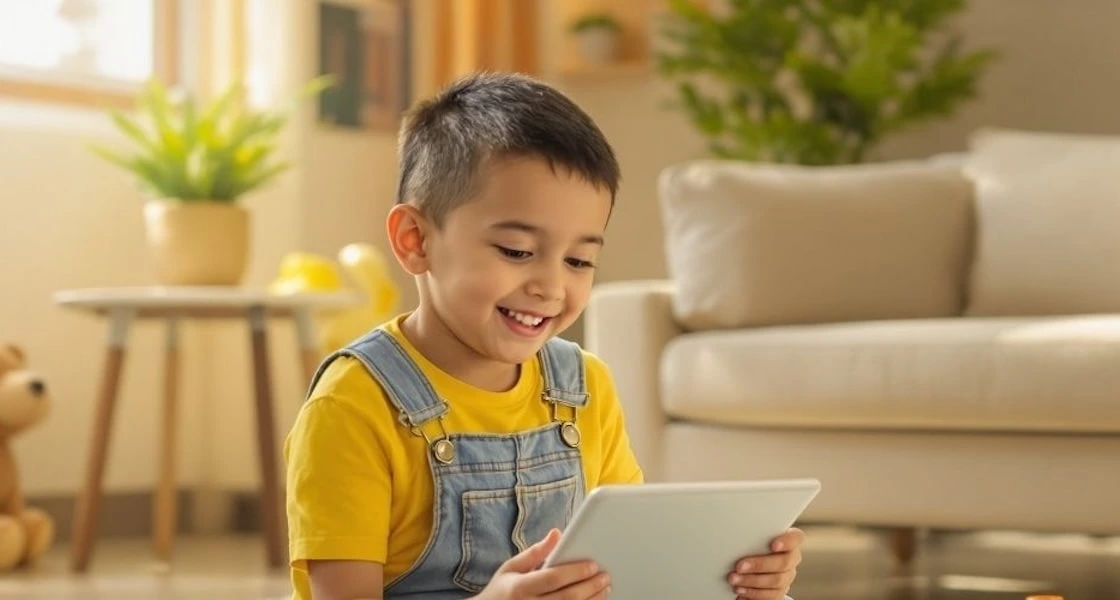Every child with ADHD learns differently, and homeschooling gives you the chance to honor that difference. While traditional classrooms can sometimes move too fast or feel overwhelming, homeschooling creates space to slow down, adjust, and encourage your child in ways that work best for them. This supportive approach can transform challenges into opportunities for growth.
At the heart of this success are two key practices: individualized learning and immediate feedback. These methods allow you to tailor lessons, celebrate small victories, and keep your child motivated throughout the day. With the support of flexible programs like Outschool, you can discover learning opportunities that align with your child’s strengths and help them thrive both academically and emotionally.
The power of individualized learning for children with ADHD
For many families, homeschooling is appealing because it allows lessons to be shaped around a child’s unique needs. For a child with ADHD, that flexibility can make a meaningful difference. Instead of relying on IEPs or 504 plans to secure classroom accommodations, parents can naturally build those supports into the homeschool day, adjusting pacing, routines, and teaching methods as needed. This is the essence of individualized learning: adapting the education to fit the child, not the other way around.
According to a study comparing homeschool and public school students with ADHD, children learning at home were engaged nearly twice as often and showed stronger progress in reading and math. A major factor was the closer connection between parent and child during lessons, which naturally allowed for individualized support and ongoing adjustments. When children receive this kind of focused attention, they are better able to stay motivated and make steady gains.
So what are the specific advantages of individualized learning for children with ADHD? Here are five key benefits:
Increased engagement
With individualized learning, your child can stay more connected to their lessons. Frequent breaks, quick activity shifts, and lessons that match their attention span help keep a child with ADHD involved and engaged instead of frustrated and losing focus.
Stronger academic growth
When learning moves at your child’s pace, they can review a skill until it truly clicks or move ahead when they’re ready. This personalized rhythm makes it easier to see real progress in core subjects like reading and math.
Personalized attention
Individualized learning means your child gets one-on-one support right when they need it. Immediate explanations and feedback help them correct mistakes quickly and build confidence as they go.
Flexible learning environments
Homeschooling allows you to create spaces and routines that support focus. Whether it’s a quiet reading corner, hands-on projects, or starting the day with movement, flexibility makes learning feel manageable and less overwhelming.
Confidence through strengths
When lessons connect to your child’s interests, like turning a history project into a creative video or using animals to explore science, learning feels exciting. Building on their passions helps them gain confidence that carries over into new challenges.
Immediate feedback: A game changer for motivation and progress
Children with ADHD may sometimes struggle to regulate emotions and stay engaged, especially when something feels too hard or uninteresting. This can lead to overwhelm, refusal, or nervous system burnout. Immediate feedback offers a supportive way to guide behavior and learning at the same time. In addition, keeping instruction conversational, like asking for your child’s input, talking through challenges, or sharing reflections, helps maintain engagement and turns feedback into connection.
Here are five ways immediate feedback can support your homeschooling routine:
Keeps attention anchored
Timely feedback helps your child stay focused on what they’re doing. If they know you’ll respond quickly, they’re more likely to stay with the task instead of drifting or giving up.
Reinforces effort over mistakes
Children with ADHD tend to respond better to consistent praise than punishment. By recognizing effort in real time, you can help your child feel motivated and reduce the power of frustration.
Reduces emotional spirals
Quick corrections keep confusion from turning into overwhelm. Instead of letting frustration boil over into emotional dysregulation, you can address challenges before they escalate.
Provides clear structure
Immediate feedback makes expectations visible. When your child knows right away if they’re on track, they feel more secure and less anxious about what’s expected.
Builds steady confidence
Celebrating wins as they happen, even small ones, gives your child momentum. Over time, this steady encouragement helps them believe in their ability to learn and succeed.
Practical ways to implement individualized learning and immediate feedback at home
Supporting a child with ADHD in homeschooling works best when strategies are flexible, engaging, and easy to adapt. Rather than sticking to rigid routines, you can experiment with different approaches until you find the right balance for your family. These ideas are meant to be practical starting points, giving you tools to try and adjust as needed.
Below are some practical strategies you can try:
Individualized learning at home
- Offer flexible lesson formats: Rotate between live online classes, self-paced projects, and one-on-one tutoring to match your child’s focus levels throughout the week.
- Link lessons to interests: Turn a love of animals into science projects, or use favorite games to introduce math concepts, so engagement happens naturally.
- Build choice into the schedule: Let your child pick the order of subjects or choose from two assignment options, which gives them a sense of control.
- Adapt the environment: Create a cozy reading corner, keep fidgets in easy-to-access places, use noise-canceling headphones, or allow standing desks to reduce distractions.
- Adjust pacing as needed: Pause when a topic feels overwhelming or move ahead when your child shows readiness, keeping the flow manageable.
Immediate feedback strategies
- Respond immediately to small wins: Simple acknowledgments like “I see you worked hard on that problem” encourage effort in the moment.
- Use interactive tools with instant results: Outschool classes, for example, let kids engage in real-time discussions, group projects, and lively activities that help them see their progress as they learn.
- Break tasks into shorter steps: Provide quick feedback at each stage so your child feels a steady sense of accomplishment.
- Highlight specific behaviors: Instead of saying “good job,” use phrases like “I like how you remembered to check your work,” which shows exactly what was done well.
- Close with reflection: End each session by noting one success together, which helps your child carry confidence into the next lesson.
Individualized learning and immediate feedback: Frequently asked questions (FAQs)
Homeschooling a child with ADHD often comes with a lot of questions. Here are answers to some of the most common questions parents ask.
How does individualized learning benefit children with ADHD in a homeschool setting?
Individualized learning allows your child to work at their own pace and lean into their natural strengths, which builds self-assurance over time. This personalized approach means you can incorporate their passions and preferred learning styles into daily lessons, keeping them naturally engaged.
What role does immediate feedback play in supporting ADHD learners at home?
Immediate feedback can keep your child from feeling stuck or unsure about what they’re doing. Instead of waiting until later to find out if something was correct, they know in the moment, which prevents frustration from building. It also gives you a chance to celebrate small wins right away, making your child motivated to keep going.
How can homeschooling parents implement individualized learning and immediate feedback for children with ADHD?
Start by noticing what times of day your child focuses best and plan lessons around that. Add variety to keep things interesting, such as mixing reading with hands-on activities or short projects. Use tools like discussion-based lessons, checklists, or quick verbal encouragement to give feedback right away. Most importantly, keep experimenting until you find the rhythm that works best for your child.
How can homeschooling support social-emotional learning and peer interaction for children with ADHD?
Homeschooling gives you the freedom to make space for social opportunities that feel supportive for your child. You can start small, like playdates or group projects, and build up as your child feels more confident. Many families also connect with co-ops or online communities in their area. This balance of academics and social growth helps your child feel more confident both in and out of learning.
Build a learning path that empowers your child
When you embrace individualized learning and immediate feedback in your homeschooling journey, you're not just adapting to your child's ADHD. You're creating an environment where their strengths shine through daily victories and real-time encouragement. Every small breakthrough, every moment of understanding, and every spark of curiosity becomes a building block for confidence.
With resources like Outschool, you can add expert guidance and engaging opportunities to your homeschool plan. Whether your child learns best through small group classes, one-on-one tutoring, or flexible self-paced lessons, there are options designed to fit their needs. Together, you can build an educational journey that feels empowering and rewarding for your family.


.svg)
.svg)







